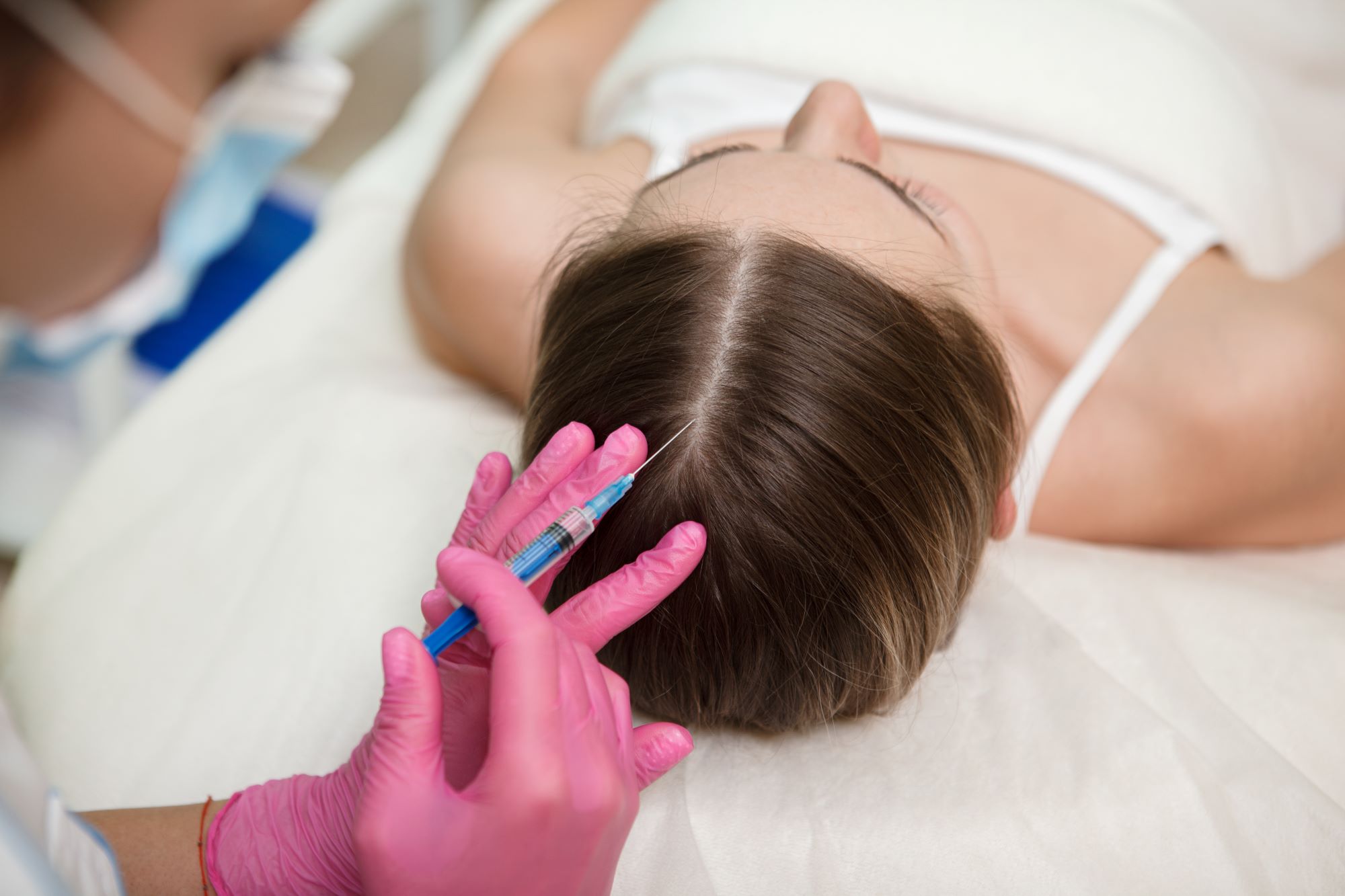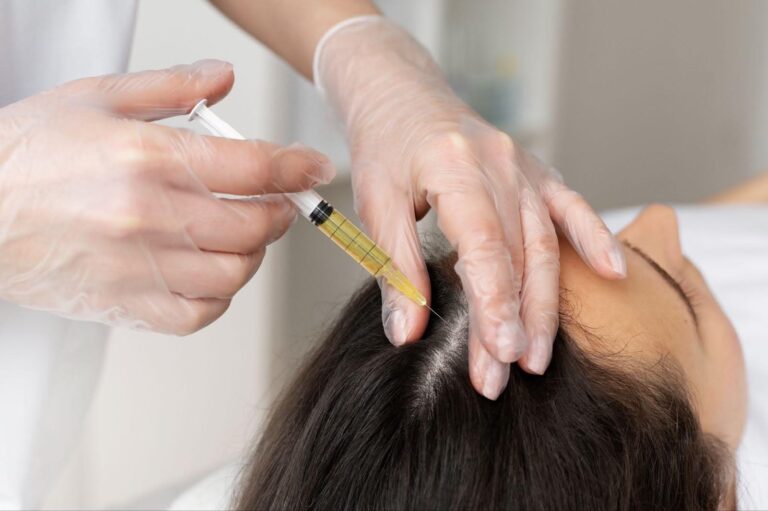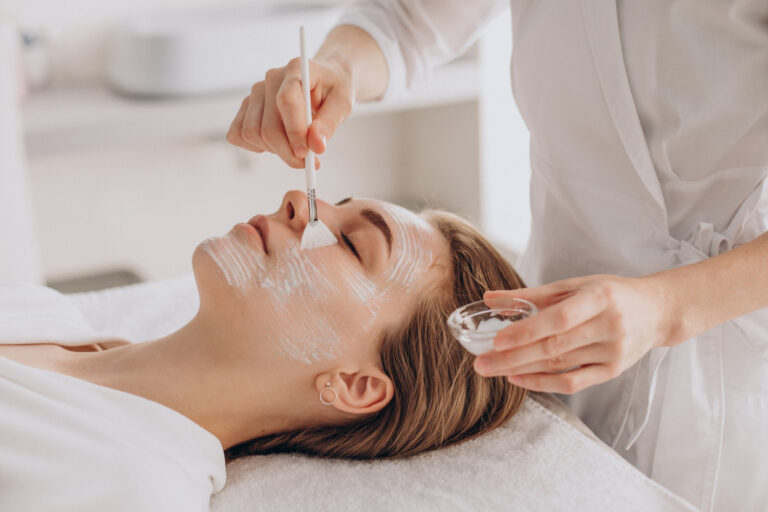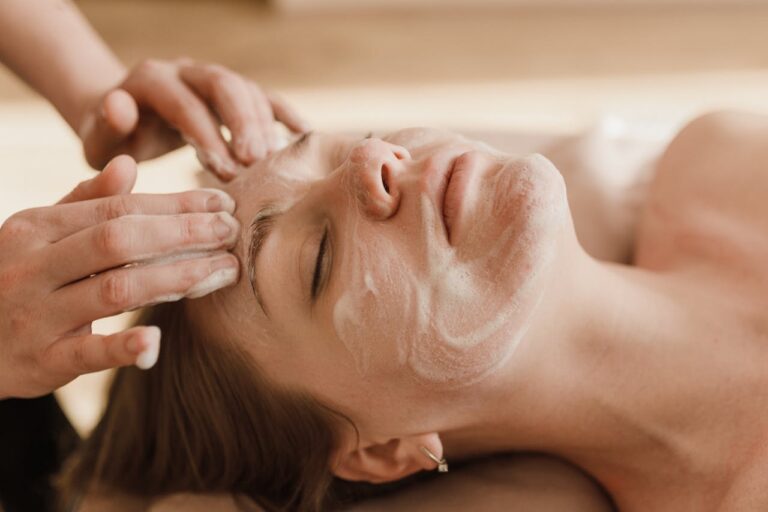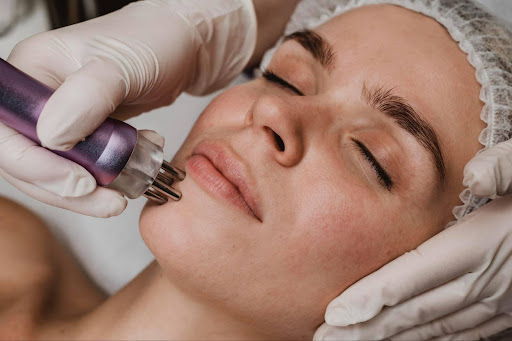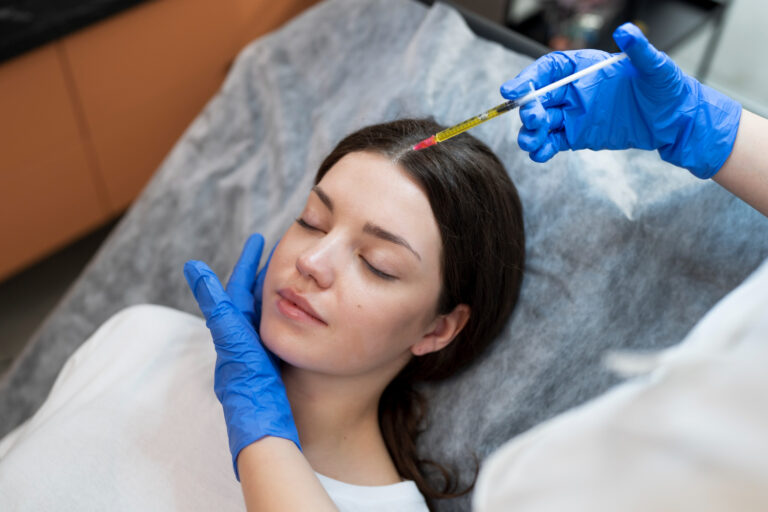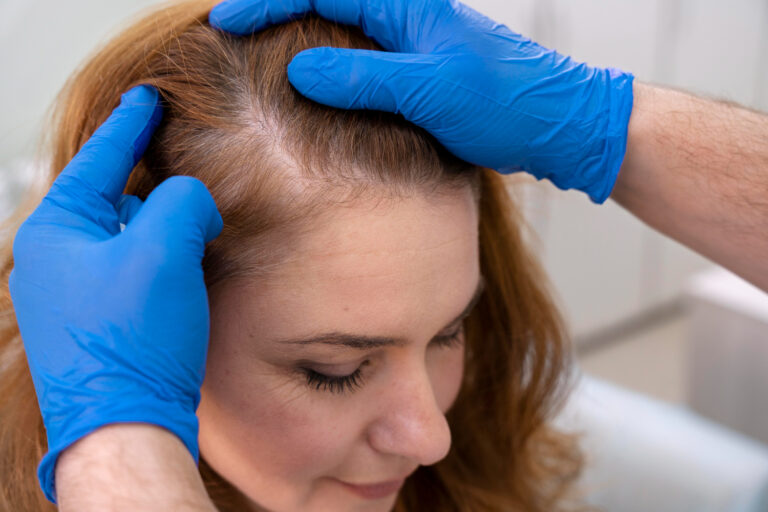Hair loss and thinning can significantly impact one’s self-esteem and confidence. Diverse factors such as genetics, hormonal changes, stress, and medical conditions contribute to these issues, leading many to search for effective remedies. Over the years, Platelet-Rich Plasma (PRP) therapy has emerged as a promising and minimally invasive solution for tackling hair loss and promoting new, healthy hair growth.
At SHAN Esthetics, we are committed to offering cutting-edge treatments that address our clients’ most pressing concerns, and PRP hair treatments provide a breakthrough solution for those affected by hair loss. Our experienced team is dedicated to assisting you in achieving fuller, denser, and healthier hair by providing personalized treatment plans tailored to your unique needs and goals.
In this comprehensive guide, we will delve into the science behind PRP hair treatments, discussing their mechanisms of action, the treatment process, and the key benefits of choosing this innovative therapy to revive your locks. Equipped with this valuable knowledge and insights, you will feel confident and empowered in choosing the right solution for your hair needs.
The Science Behind PRP Hair Treatments
Platelet-Rich Plasma (PRP) therapy takes advantage of the body’s own healing capabilities to address hair loss and stimulate new growth. The treatment involves extracting plasma from a patient’s blood, which is enriched with platelets that contain valuable growth factors and proteins crucial for cellular regeneration, tissue repair, and stimulating inactive hair follicles.
By injecting the concentrated PRP into targeted areas of the scalp, these growth factors are released at the hair follicle level, aiding in the regeneration process and promoting a healthier environment for hair growth. The result is an improvement in hair density, thickness, and overall follicle health, actively combating hair loss and thinning.
Ideal Candidates for PRP Hair Treatments
Though PRP hair treatments can be effective for a wide range of individuals, certain factors may increase the success rate of the treatment. You may be an ideal candidate for PRP hair treatments if you experience:
1. Pattern Hair Loss: Both men and women experiencing early-stage androgenetic alopecia can benefit from PRP therapy, as it helps stimulate inactive hair follicles before irreversible hair loss occurs.
2. Hair Thinning: Individuals experiencing overall hair thinning without significant bald spots can find value in PRP treatments, as they can help reinforce the existing hair and promote stronger, denser growth.
3. Alopecia Areata: This autoimmune disorder leads to unpredictable hair loss in round patches. PRP therapy has shown promise in alleviating the symptoms of alopecia areata and encouraging hair regrowth.
It is important to note that PRP therapy may be less effective for individuals with complete hair loss, inactive hair follicles, or certain medical conditions. A consultation with our skilled professionals will help ascertain the suitability of this treatment based on your specific hair concerns.
The PRP Hair Treatment Process
The PRP hair treatment process is minimally invasive and typically involves a few straightforward steps:
1. Blood Draw: A small sample of your blood is drawn, typically from your arm, just as it would be for a routine blood test.
2. PRP Separation: The collected blood is placed in a centrifuge, which rapidly spins to separate the platelet-rich plasma from red blood cells and other blood components.
3. PRP Preparation: The extracted PRP is prepared for the treatment, often mixed with an activator that encourages the release of growth factors.
4. Injection: A local anesthetic may be applied to the treatment area to minimize discomfort. The prepared PRP solution is then injected across the target areas of the scalp using a precise technique.
5. Follow-up and Recovery: Repeat treatments may be required for optimal results, usually every three to six months, depending on the individual’s response and hair growth progress. A follow-up appointment is typically scheduled to assess progress and adjust treatment plans as needed. Recovery is generally minimal, with possible mild swelling or tenderness at the injection site.
Key Benefits of PRP Hair Treatments
1. Natural Solution: PRP hair treatments utilize your body’s own healing and regenerative mechanisms, mitigating the need for medication or invasive procedures.
2. Minimally Invasive: The treatment involves only injections, with no incisions or scarring associated with more invasive hair restoration procedures.
3. Minimal Downtime: With no significant recovery time necessary, clients can typically return to their daily activities within 48 hours of treatment. Mild discomfort and swelling are usually resolved quickly with minimal aftercare.
4. Improved Hair Growth: Following a personalized treatment plan, clients can expect to see improvements in hair density, thickness, and overall health as a result of the activated follicles and improved scalp environment.
Conclusion
For individuals seeking a natural and minimally invasive solution for hair loss and thinning, PRP hair treatments offer a promising and effective approach. The specialized professionals at SHAN Esthetics are committed to helping you achieve desired results through the development of personalized treatment plans that address your unique needs and concerns.
Embrace the potential of PRP hair treatments and the confidence that comes with revitalized, fuller locks. Your journey to improved hair health and a more vibrant appearance begins with trust in our skilled team and dedication to our clients’ well-being and satisfaction.
If you are ready to combat hair loss and embrace fuller, more vibrant locks, schedule a consultation with the expert team at SHAN Esthetics to discuss your hair concerns and develop a personalized PRP hair treatment plan tailored just for you. Together, we’ll help you unlock the secrets to healthier, fuller hair.
